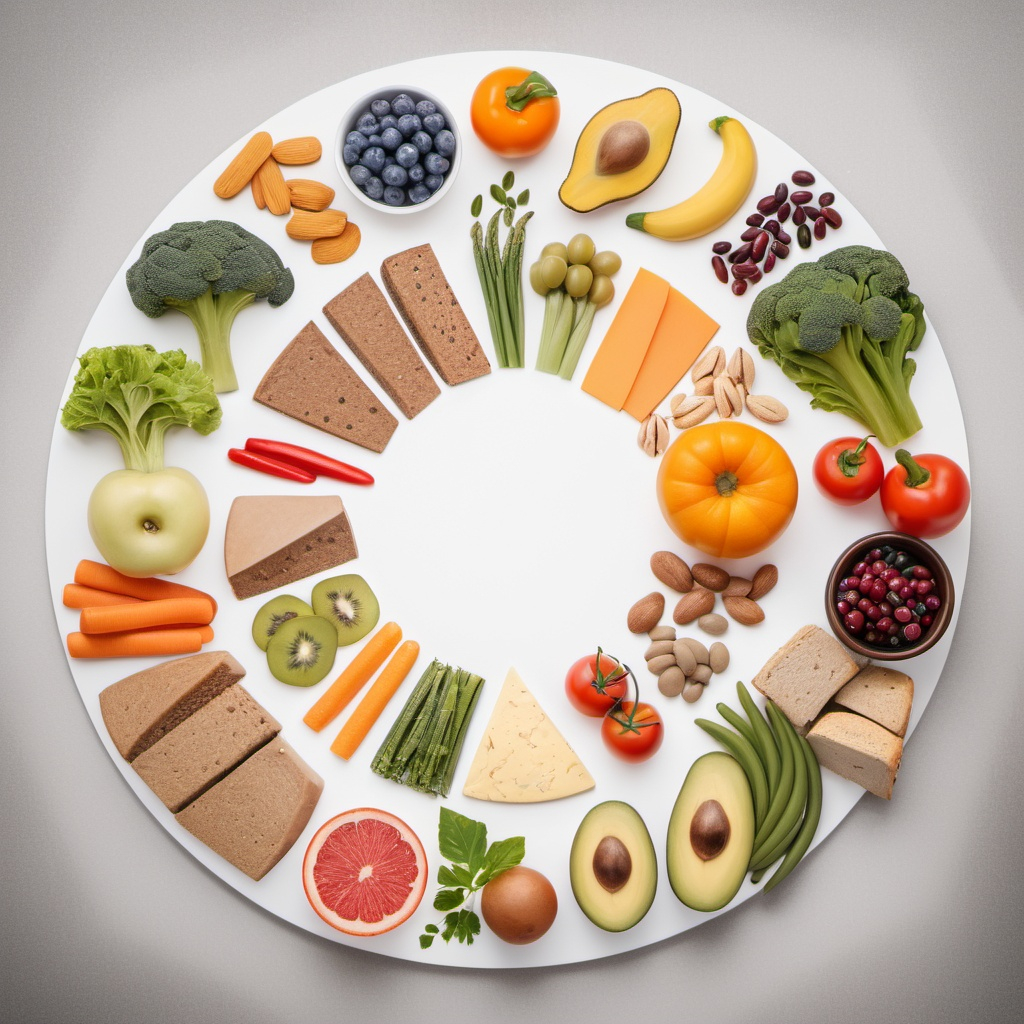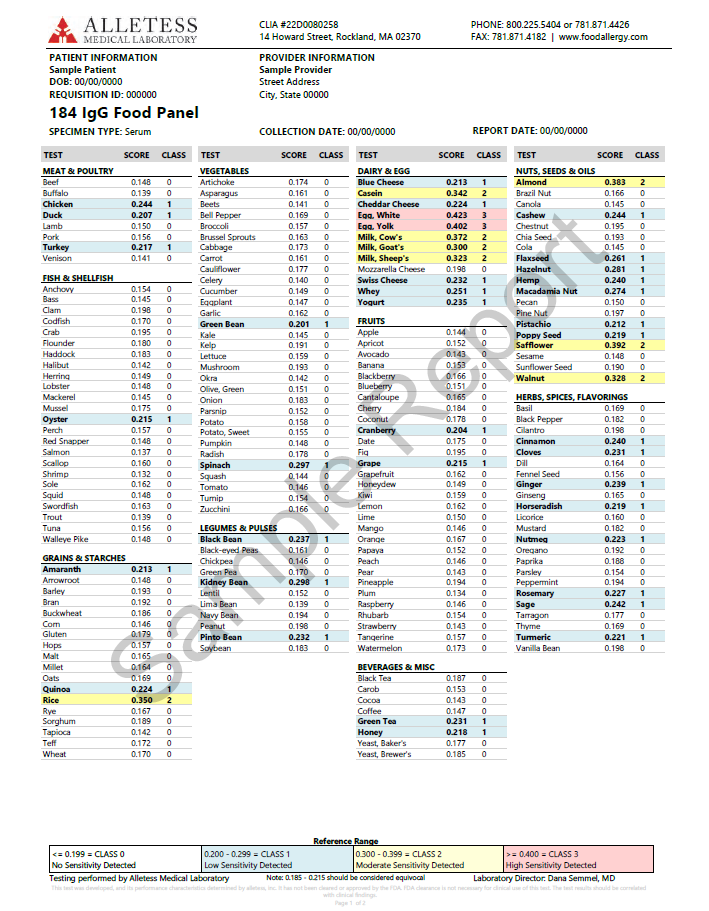
Table of Contents
What is a Rotation Diet?
What is a Rotation Diet? It’s like a delicious dance party for your taste buds! Foods are rotated based on family groups every four days. So, if a food is eaten on day one, it is not eaten again until four days later. What people may not know is that you can use a particular food within the family group every second day as long as it is not used again for four days. By switching up your meals and introducing variety, this diet helps keep your body on its toes and prevents food boredom. Say goodbye to the same old, same old, and let’s dive into the world of rotating flavors and tantalizing your palate!

Benefits of a Rotation Diet
Benefits of a Rotation Diet? It is great for anyone who has allergies or sensitivities to foods and is a very healthy way to go! Not only does it bring a burst of excitement to your meals, but it also keeps your body guessing, which can help with weight management and reduce the risk of developing food sensitivities. People usually develop food sensitivities to a food item they eat every day. Plus, it’s a fantastic way to explore new flavors and get creative in the kitchen. So, let’s break free from food monotony and embark on a taste bud adventure with the Rotation Diet! Who’s ready to spice things up?
Crafting Your Own 4-Day Rotation Diet
On deciding on your 4-day rotation diet, you can change the foods around for just say, breakfast, eggs, and not have eggs again for four days, or use eggs in other meals that same day. Eggs are in the same family as chicken, so you could have eggs one day and have chicken two days later! Or choose another family member of the same family, which is Cornish Hen or Quail. And, if you like fish, most fish are in a family by themselves!
So, start writing down the foods you want to use in the food families for each meal!
Day 1: Kickoff with Exciting Flavors
Say goodbye to boring food routines and hello to a culinary adventure like no other. With a burst of flavors to reduce food sensitivities, it’s time to kick off Day 1 with excitement and deliciousness. Let the taste bud extravaganza begin! Who’s ready to join the flavor revolution?
Hint: When preparing your meats, it is easier to trim the excess fat while the meat is still partially frozen. This helps avoid a lifetime of chemicals and pesticides found in the grains fed to the animals.
Day 2: Mixing It Up!
Get ready for Day 2 of the Rotation Diet where we’re all about mixing it up! Say goodbye to food monotony, because today we’re taking your taste buds on a wild ride. Prepare to indulge in a variety of flavors that will keep you guessing and make every meal an adventure. Who’s ready to shake things up and dive into a world of culinary creativity? Let’s mix it up and make mealtime exciting again!
Hint: To freeze vegetables, freeze them separately and add to soups or stews later for the day allowed.
Day 3: Spice Things Up
Spice up your taste buds and get ready for Day 3 of the Rotation Diet! Say goodbye to bland meals and hello to a burst of flavor that will ignite your senses. Today, we’re turning up the heat and adding a dash of excitement to your plate. Get ready to tantalize your taste buds with a spicy culinary adventure that will leave you craving for more. It’s time to spice things up and embrace the bold flavors of Day 3! Who’s ready to ignite their taste buds and join the flavor revolution?
Hint: To prepare seasonings in advance, chop and layer on a cookie sheet, quick freeze, they store in bags in the freezer for later use in cooking (onions, green pepper, carrots, celery, parsley,m chives, fresh chopped herbs, etc.)
Day 4: A Grand Finale
Prepare for the grand finale of the Rotation Diet on Day 4! Get ready to bid farewell to dull meals and say hello to a mouthwatering masterpiece. We’re pulling out all the stops and delivering a culinary sensation that will leave you speechless. Brace yourself for a symphony of flavors that will make your taste buds sing with joy. It’s time to savor the last day of this gastronomic adventure and end it on the most delicious note imaginable. Who’s ready to indulge in the grand finale and savor the taste of victory?
Hint: Beverages can be obtained from the fruits, and vegetables allowed for that day. And, herb teas can be rotated as well.
Common Food Sensitivities
Identifying Your Triggers
Prepare to identify your triggers and take control of your journey. To do this, you can do a simple at home allergy test, or take one food at a meal and keep track of how you feel. This can be confusing, though, because symptoms from that food may take 48 hours.
It’s time to delve deep and understand what truly sets you off. Let’s uncover the keys to your success and unlock a brighter future. Are you ready to empower yourself and triumph over your challenges?
Foods to Consider Avoiding
When it comes to foods to consider avoiding, they are the foods you most likely eat every day! The following is a list of the most common foods: milk and milk products, wheat and gluten grains, peanuts, sugars. Remember, making conscious choices about what you consume can have a profound impact on your overall well-being. Tests that can identify foods you may be sensitive to are on our page Food Allergy Tests. Stay mindful and stay on track towards a healthier you.
Mold and Yeast Sensitivities
Understanding Mold and Yeast
Are you aware of the potential impact of mold and yeast sensitivities on your well-being? It’s crucial to understand how these elements can affect your body. Let’s delve into the intricacies of mold and yeast sensitivities and equip ourselves with the knowledge needed to make informed choices.
Take charge of your health and embark on a path towards a brighter and healthier future.
How They Affect Your Diet
Being aware of the impact these sensitivities can have on your body is essential. Let’s explore how mold and yeast sensitivities can affect your diet and equip ourselves with the knowledge to make informed choices. Take control of your health and embrace a brighter, healthier future.
Molds are also found in many foods, as well as being air-born. The fungi family includes mushrooms, baker’s and brewer’s yeast. Brewer’s yeast is found in all fermented foods including vinegar, aged cheeses, and all alcoholic beverages. All nuts and seeds should be roasted and stored in the freezer. This can be done by baking them at 325F for about 10-15 minutes. Roasted nut butters are safe to eat.
Food Preparation Tips
Creative Cooking Techniques
Are you familiar with the creative cooking techniques that can help accommodate food, mold and yeast sensitivities? Discover innovative ways to prepare your meals while considering these sensitivities. A good book is “Rotational Bon Appetit” by the Environmental Health Center – Dallas. Enhance your culinary skills and embrace a healthier, more fulfilling dining experience.
Batch Cooking for Success
Batch cooking can be a game-changer for success with food, mold and yeast sensitivities. Plan your meals ahead and prepare larger quantities to save time and ensure you always have safe and delicious options available.
Storing Your Delicious Creations
When storing your delicious creations, keep in mind the importance of proper food handling to prevent mold and yeast growth. Follow best practices for storage, such as using airtight containers and refrigerating or freezing food promptly to prevent mold and yeast growth.
Wrapping It All Up
To wrap it all up, remember the benefits of a rotation diet in managing food, mold and yeast sensitivities. By testing for sensitivities and varying your food choices, you can reduce the risk of developing intolerances and maintain a balanced diet. Stay strong and encouraged throughout your journey. You have the power to take control of your health and create a thriving lifestyle. Keep pushing forward and embrace the positive changes you’re making.
FAQ’s About Rotation Diet
What are the foods on a Rotation diet?
A rotation diet typically includes a variety of foods organized into categories to minimize allergic reactions or sensitivities. Common foods include:
Proteins: Chicken, turkey, fish, beef, eggs, lentils, beans
Grains: Brown rice, quinoa, oats, barley, millet
Vegetables: Carrots, broccoli, spinach, zucchini, sweet potatoes
Fruits: Apples, bananas, berries, oranges, pears
Dairy: Yogurt, cheese, milk (if tolerated)
Fats: Olive oil, coconut oil, avocados, nuts, seeds
Each food group is rotated to avoid prolonged exposure to any single food.
Do Rotation diets work?
Rotation diets can be effective for some individuals, particularly for managing food sensitivities or allergies. By alternating foods, it may help reduce the likelihood of developing intolerance. However, results can vary, and it’s essential to consult with a healthcare professional before starting any dietary changes.
Products
At Home Tests
-
Alletess Food Allergy Sensitivity Test
At Home Health Tests, Allergy Tests, Blood Spot Tests, Allergy Solutions, Lung Solutions, Gastrointestinal Solutions$269.00 $223.00Successfully Added to your Shopping CartAdding to Cart... -
UCARI Intolerance Test Kit
At Home Health Tests, Hair Tests, Allergy Tests, Nutritional Tests, Environmental Pollutants Tests, Mycotoxin Molds Tests, Allergy Solutions, Lung Solutions, Gastrointestinal Solutions, Immune System Tests, Candida Solutions$99.99 $88.00Successfully Added to your Shopping CartAdding to Cart...
Supplements
References
Brostoff, J. and Challacombe, S. J.: Food Allergy and Intolerance. London: Balliere Tindall Pub, 1987
Erasmus, Udo: “Fats that Heal and Fats that Kill” ISBN 0-920470-38-6
Golos, N. and Golbitz F.G: Coping with Your Allergies. New York: Simon and Schuster Inc., 1986
Maynard, B et al.: Rotational Bon Appetit Cookbook. Dallas TX: Environmental Health Center – Dallas 1917
Rapp, D,J.: Allergies and the Hyperactive Child. New York: Sovereign Books, 1982


